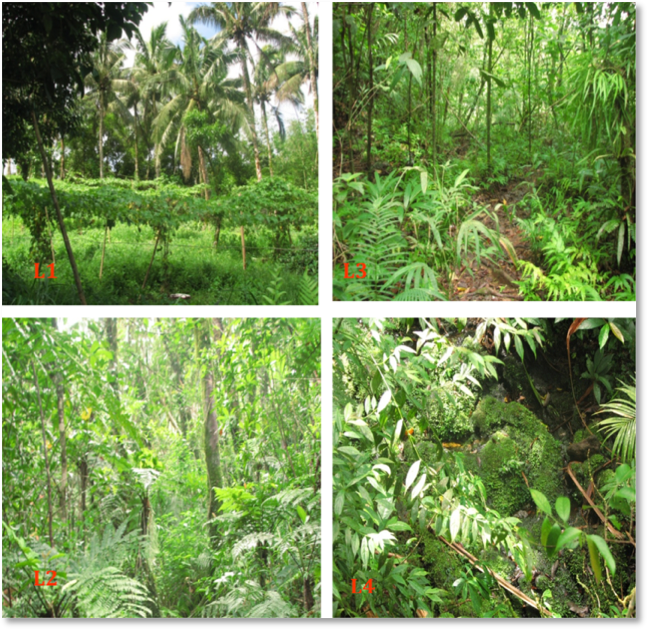VOLUME 11 NUMBER 1 (January to June 2018)

Philipp. Sci. Lett. 2018 11 (1) 022-029
available online: April 24, 2018
*Corresponding author
Email Address: aodeguia@up.edu.ph
Date Received: May 29, 2017
Date Revised: February 14, 2018
Date Accepted: March 6, 2018
ARTICLE
Distribution and diet of small non- volant mammals along elevational gradients of Mt. Banahaw
by Anna Pauline O. de Guia1*, Nikki Dyanne C. Realubit2, and Julius Caesar A. Jaluague2,3
1Animal Biology Division, Institute of Biological Sciences,
College of Arts and Sciences, University of the Philippines Los Baños
2Graduate School, University of the Philippines Los Baños
3College of Arts and Sciences, Southern Luzon State University
College of Arts and Sciences, University of the Philippines Los Baños
2Graduate School, University of the Philippines Los Baños
3College of Arts and Sciences, Southern Luzon State University
Wet and dry season samplings for small non- volant mammals in Mt. Banahaw were conducted in July 2013 and March to April 2014, respectively. Nine sites representing five habitat types in two sides of Mt. Banahaw (de Lucban and de Tayabas) were sampled. Nine species consisting of six native and three non-native species with a total of 290 individuals were recorded. Trap success was highest in agricultural sites for Lucban and Tayabas, at 16% and 17%, respectively, during the wet season. It was lowest in the secondary lowland forest in Tayabas with an average of 0.67% trapping success. The most abundant species were the non-native Rattus tanezumi and the Banahaw endemic Apomys banahao. One of the highlights of this survey was the first confirmed record of Chrotomys mindorensis in Mt. Banahaw de Lucban within the agricultural area. Diet of native species consisted mostly of arthropod parts while non-native species contained mostly plant or digested matter. Our data suggest that, in the Mt. Banahaw–San Cristobal Protected Landscape, non-natives may have little negative effects on native wildlife species. However, habitat integrity must be maintained, and further agricultural encroachment should be prevented.
© 2025 SciEnggJ
Philippine-American Academy of Science and Engineering